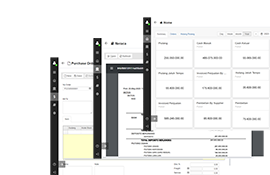Captive Market
Table of Contents:
Definition of Captive Market
A captive market refers to a situation in which a specific group of consumers is limited in their choice of goods or services due to certain factors that restrict their options.
These constraints can include geographical location, regulations, lack of alternatives, or exclusive relationships.
In a captive market, consumers have little or no choice but to purchase from a single provider, often leading to reduced competition and the potential for higher prices.
What is Captive Market?
A captive market is a scenario where consumers are compelled to buy products or services from a particular source due to limited alternatives or imposed restrictions.
This lack of choice gives the provider a significant advantage, potentially allowing them to control pricing and dictate terms.
Captive markets can arise from various circumstances, such as monopolies, legal barriers, or unique supply situations, creating an environment where consumers have minimal bargaining power.
What are examples of Captive Market?
Consider a remote island with a single grocery store that is the sole provider of essential goods. The island's geographical isolation and lack of competitors mean that residents have no other option but to purchase their groceries from this store.
The grocery store becomes a captive market, enjoying a near-monopoly on supplying goods to the island's population. As a result, the store might have the ability to set higher prices than would be possible in a competitive market.
Another example is a university that has an exclusive contract with a particular food service provider. Students and faculty on campus have limited dining options, as the university has granted exclusive rights to the contracted provider.
This creates a captive market where individuals are required to buy meals from the designated provider, even if they would prefer other options. The provider may have less incentive to offer competitive prices or a wide variety of choices due to the captive nature of the market.
Captive markets can also arise in industries with high barriers to entry. For instance, a pharmaceutical company that holds a patent for a life-saving drug might have a captive market of patients who rely on that medication.
Patients have little choice but to purchase the drug at the price set by the pharmaceutical company, as there are no generic alternatives available due to the patent protection.
Captive markets underscore the importance of competition and consumer choice in promoting fair pricing, innovation, and quality.
Regulatory measures and antitrust laws are often implemented to address and prevent the potential negative effects of captive markets on consumers and overall market dynamics.
